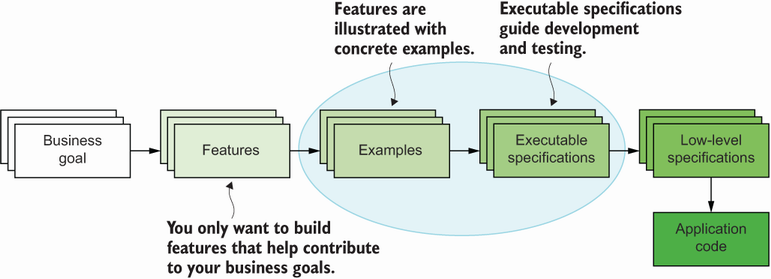chapter seven
In the last chapter, you saw how conversations with the stakeholders around business rules and concrete examples are a very effective way to build up a common understanding of a problem space. In this chapter, you’ll learn how to express these examples clearly and precisely in a way that will allow you to transform them into executable specifications and living documentation (see figure 7.1).
Figure 7.1 In this chapter we’ll take examples we used to discuss and illustrate features in previous chapters and turn them into executable specifications.

The aim of this chapter is to help developers, business analysts, testers, and other interested team members get a solid shared understanding of how to read and write executable specifications in a way that makes it easy to automate them. BDD has a number of well-defined practices to achieve this shared understanding: